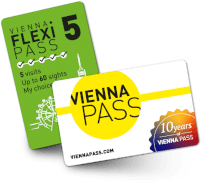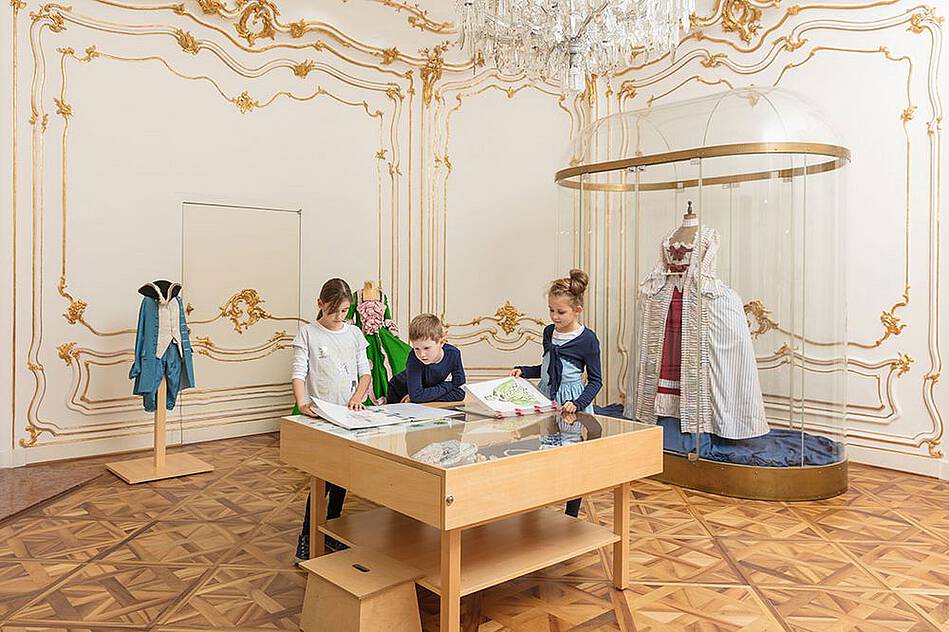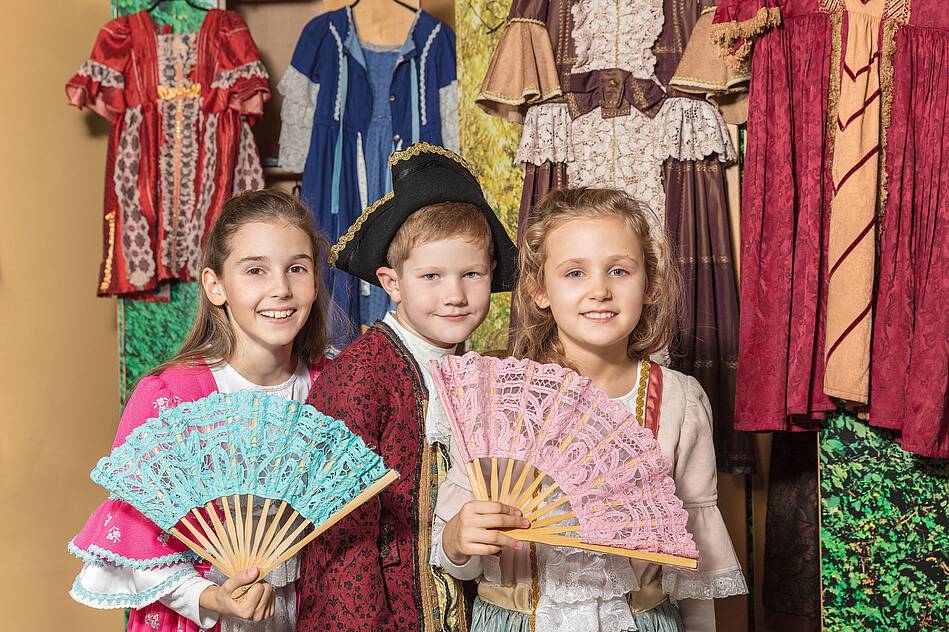![[Translate to English:] [Translate to English:]](/fileadmin/_processed_/c/6/csm_Kindermuseum_Verkleiden_SKB__Foto_Reza_Sarkari_b31cd4d0ab.jpg)
Children's Museum Schönbrunn Palace
The area in the palace specially created for children and families provides an the everyday life of the emperor's children and invites the young visitors and invites young visitors on a journey back to the time of Maria Theresa. The young visitors can take an active part in imperial life and create magnificent hairstyles or or set a festive table. After a visit to the children's museum dressing up is especially fun - a souvenir photo in imperial garb is the crowning imperial robes is the crowning glory of your visit!
Did you know that:
-... Empress Maria Theresa and Emperor Franz Stephan of Lorraine had sixteen children? - Eleven daughters and five sons.
-... Emperor Leopold I originally had Schönbrunn Palace built as a hunting lodge at the end of the 17th century?
-... Empress Elisabeth was an enthusiastic and daring horsewoman, she also mastered all disciplines in the side saddle?
Things to see at Schönbrunn Palace and Estate:
The maze in the park at Schönbrunn Palace actually consists of three parts: the maze, the labyrinth, and the Labyrinthikon playground. The maze was initially laid out around 1720 and then gradually abandoned until the last hedges were felled in 1892. In 1999, it was reconstructed based on historical models over an area of 1715 m². The labyrinth is a relaxing place filled with games and fun for young and old alike. The Labyrinthikon playground, designed by Günter Beltzig, is a playground where all generations can experiment.
See the Great and Small Galleries with their magnificent stucco and fresco decorations. From the time of Maria Theresa until the 20th century, the two halls were used for ceremonial events, balls and private family celebrations. Maria Theresa's preference for precious objects from East Asia is reflected in the Chinese cabinets. Large-format paintings depict the important events of the famous monarch, which not only shaped European politics but were also intended to be remembered by posterity. For conservation reasons, these cabinets cannot be entered and are protected by glass doors.
The Children's Museum at Schönbrunn Palace is a great way to get your kids involved in Vienna's imperial history. This museum looks at the world in which children lived during the Austrian Empire, both from here within the palace, to down in the poorer neighbourhoods of Vienna. It's a fascinating step back in time to learn about the society and demands of children over the changing hands of imperial power. Please note that the Children's museum has saisonal opening hours.
Schönbrunn Palace is so vast that it is home to Vienna’s zoo, which also holds the title of the oldest zoo in the world. Built in 1752 by Emperor Franz I Stephan, Maria Theresa’s husband, it started off as a mere menagerie – now it attracts over 2million visitors a year to view the collection of rare animals. Recent record breaking events include the rare, natural conception of a baby panda Fu Long. With over 500 animal species, the Schönbrunn Zoo is considered one of the best and most modern zoo, with its historic charm ever present. Further information on Schönbrunn Zoo can be found here.
Marvel at the lavish carriages of the imperial family in the palace's Carriage Museum. The collection includes the elaborate carriage built for the coronation of Joseph II in 1764 - which weights 4000 kgs! - and was hand painted and carved by Franz Xaver Wagenschön. Further information on the Imperial Carriage Museum Vienna can be found here.
The Privy Garden, known originally as the Crown Prince Rudolf Garden, is home to some of the most spectacular plants and flowers in the summer time due to its sheltered location by the east palace façade. Arranged in manicured lawns and landscaped flower beds, the stunning Privy Garden is centred around an ancient yew tree. Adjacent to the Privy Garden is 'On the Cellar', where visitors can explore the oldest part of the gardens on the estate which date back to 1700.
Measuring 189m in length, the Orangery is one of the two largest Baroque orangeries in the world, alongside the one in Palace of Versailles, on the outskirts of Paris. Franz Joseph II used to use his Orangery, or as it was called, the 'winter garden', for imperial court festivities where he would decorate the citrus trees and exotic flowers to impress his guests!
The crowning touch to the Baroque palace, the Gloriette was literally meant to be the icing on the cake. A colonnaded building flanked by wings, arches and topped with an imperial eagle – you can’t get much more impressive than this. The inner hall was originally used as a dining room in the 19th century and now there is a lovely café open to guests. Take in the spectacular views over the gardens and palace from this unique vantage point, perfect for some impressive photos.
It was Joseph II who opened the palace gardens to the public in 1779. The design and garden architecture of the complex still bears the signature of his mother, Empress Maria Theresa. The park reflects the baroque concept of the palace, according to which architecture and nature had to interpenetrate. The park should also be a symbol of imperial power, which is expressed, for example, in the strictly symmetrical beds of the Great Parterre, which you shouldn't miss with the botanical garden.
The palace gardens
The Palace gardens and park were open to the public in 1779 by Josepf II. It was Maria Theresias who helped design the intricate style and landscaping still visible today. The gardens reflect the same Baroque style and concepts – architecture and nature should be intertwined – that extend from the palace itself. The gardens were meant to be a symbol of imperial power, so don’t miss the ordered, symmetrical beds of the Great Parterre and the Botanical Garden.
Children's Museum Schönbrunn Palace
Public
Metro:U4 Schönbrunn
Tram:10, 60 Schloss Schönbrunn
Bus: 10A Schloss Schönbrunn
Hop On Hop Off
Route: Yellow Line
Bus Stop:
Schloss Schönbrunn
Address
Schönbrunner Schloßstraße 47,
1130
Vienna
Phone:
+43 1 811 13-239


